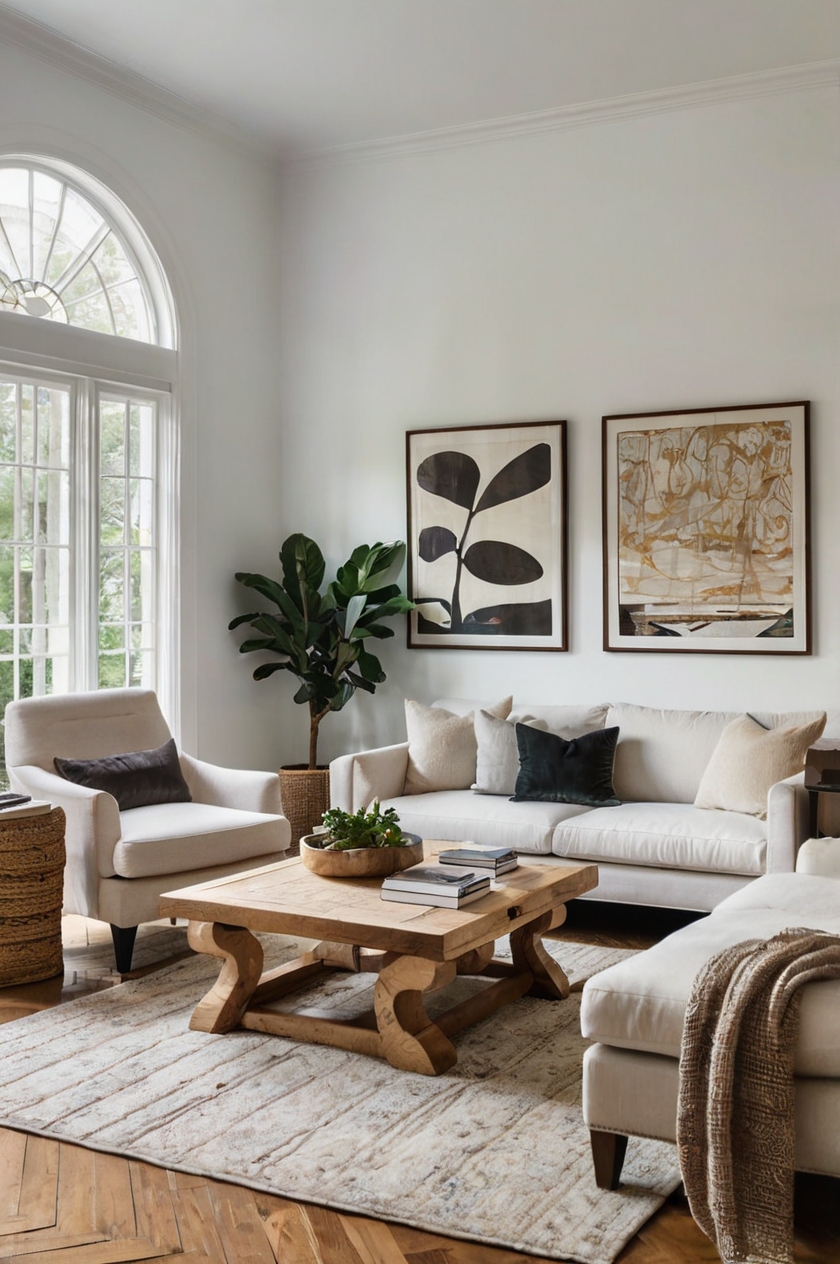Ever walked into a room that felt like a breath of fresh air?
Spacious, bright, and open?
The secret might be simpler than you think – it’s all about the paint color!
The right shade on your walls can transform even the smallest spaces into airy, expansive retreats that welcome you home.
When your room feels cramped or dark, you don’t need to knock down walls or install new windows.
A can of paint might be all you need to create that feeling of openness you crave.
Paint colors have amazing power to trick the eye and change how we perceive spaces.
Lighter colors tend to reflect light rather than absorb it, instantly making rooms feel more open and bright.
But it’s not just about going white with everything – the perfect space-enhancing color has the right undertones, reflective qualities, and psychological effects that work together to create that magical feeling of spaciousness.
Ready to transform your space with just a roller and a few cans of paint?
1. Classic White: The Ultimate Space Expander
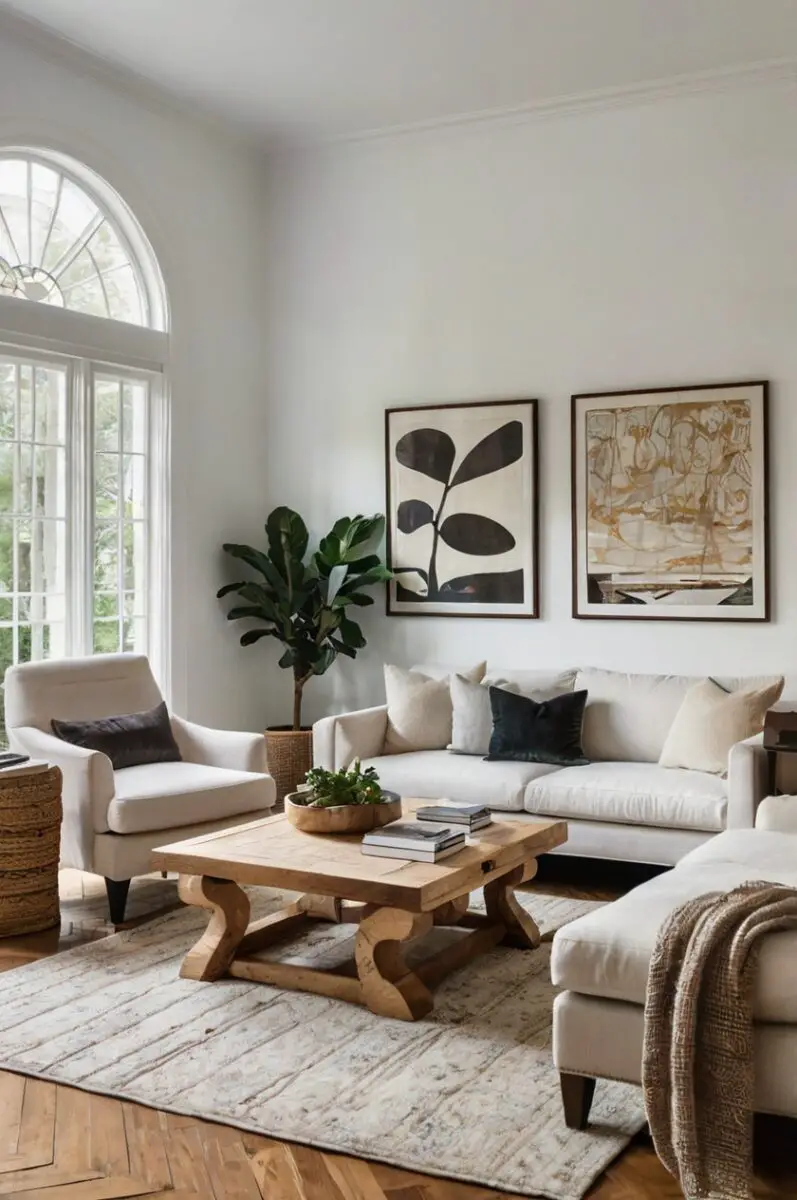
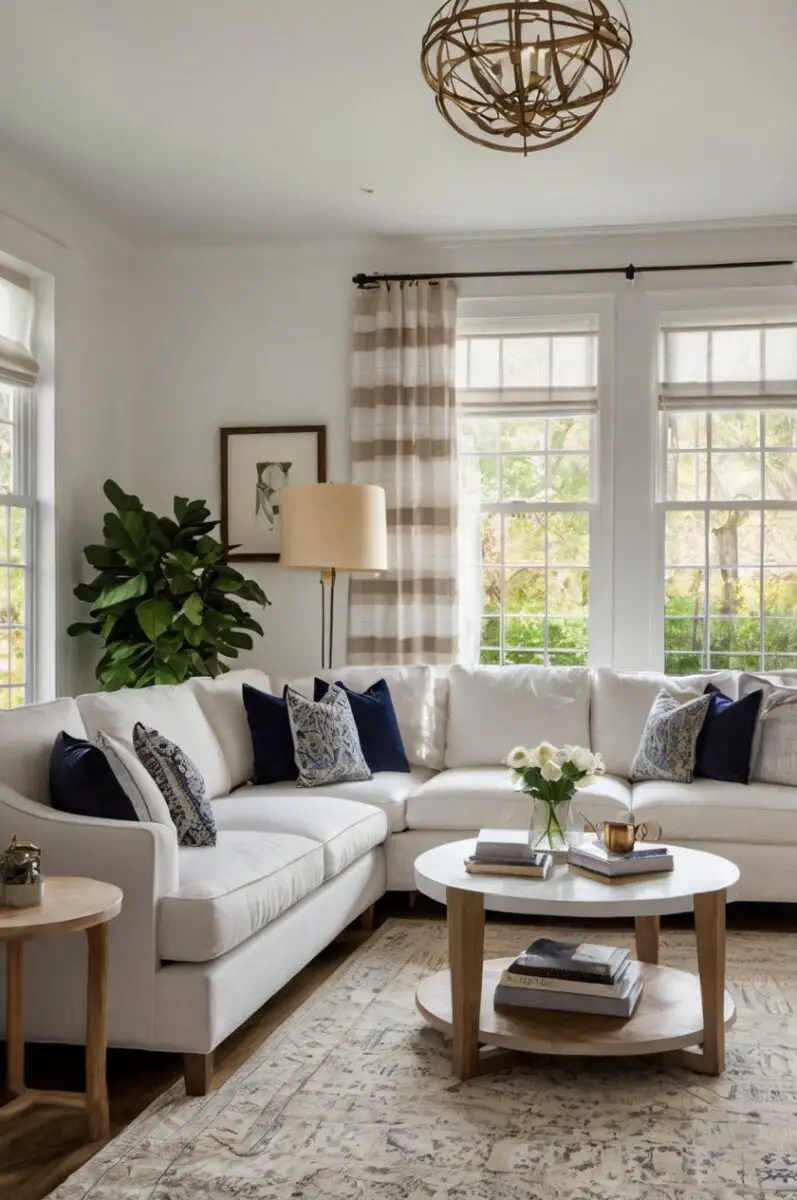
When it comes to creating space with paint, classic white remains the champion for good reason.
White walls act like mirrors for natural light, bouncing it around your room to eliminate shadows that make spaces feel smaller.
The reflective quality of white paint helps blur the boundaries of your walls, making them appear to recede rather than close in on you.
Unlike darker colors that absorb light, white reflects almost all light that hits it, instantly brightening every corner of your space.
White creates a clean backdrop that allows your eyes to travel freely around the room without visual interruptions that can make spaces feel cluttered.
For tiny rooms with limited natural light, white paint can transform the atmosphere from cave-like to airy and open.
Pure whites work beautifully in contemporary spaces, while off-whites and creamy whites add warmth to traditional rooms while still maintaining that space-expanding effect.
When painting with white, consider using the same shade on trim and moldings to create a seamless look that further enhances the feeling of spaciousness.
White ceilings are especially important in low-ceiling rooms, as they visually push the ceiling higher and create the illusion of more vertical space.
For maximum effect, pair white walls with light-colored flooring and furniture to create a cohesive, open feeling throughout the entire space.
White doesn’t have to feel sterile – adding textured accessories, plants, and natural materials brings warmth while maintaining the spacious feeling.
The psychological effect of white shouldn’t be underestimated – humans associate white with openness, cleanliness, and freedom, subconsciously making rooms feel more expansive.
Professional painters recommend satin or eggshell finishes for white paint in small spaces, as they reflect even more light than flat finishes.
Madison’s Current Obsessions
What If The Right Paint Color Could Make Your Golden Oak Floors Shine Even Brighter? Find Out Here!2. Soft Blue: The Sky’s the Limit

Soft blue paint brings the expansive feeling of the open sky indoors, psychologically tricking your brain into perceiving more space.
Pale blue tones naturally recede visually, making walls appear to be farther away than they actually are.
The color blue naturally evokes feelings of openness and tranquility, reminiscent of vast skies and oceans – spaces without boundaries.
Light blue walls pair beautifully with white trim to create clean lines that enhance the spacious feeling in any room.
In bedrooms, soft blue creates a restful atmosphere while simultaneously making the space feel larger and more relaxing.
Blue paint with gray undertones offers a sophisticated space-enhancing option that works well in both traditional and contemporary spaces.
For north-facing rooms that tend to feel dark, blue shades with slightly warmer undertones can brighten the space while still creating that expansive feeling.
Painting adjoining spaces in coordinating blue tones creates flow between rooms, making your entire home feel more spacious.
The versatility of soft blue allows it to work with almost any decor style while still performing its space-enhancing magic.
When selecting blue paint for small spaces, stick to those with light reflectance values (LRV) above 60 for maximum brightness and space enhancement.
Blue ceilings, especially in pale sky-like tones, can make low ceilings appear higher by visually blending with the walls.
Bathrooms particularly benefit from light blue paint, as the color’s association with water creates a natural, spacious feeling even in the smallest powder rooms.
For a contemporary twist, consider blue-greens like spa blue or pale aqua that retain all the space-enhancing properties while adding a fresh, current feel.
Design Your Dream Room in Minutes!
🏡 Start Creating FREE →Madison’s Current Obsessions
Trendy Colors to Paint Your Fence : For A Stylish Yard3. Light Gray: Sophisticated Space Creator
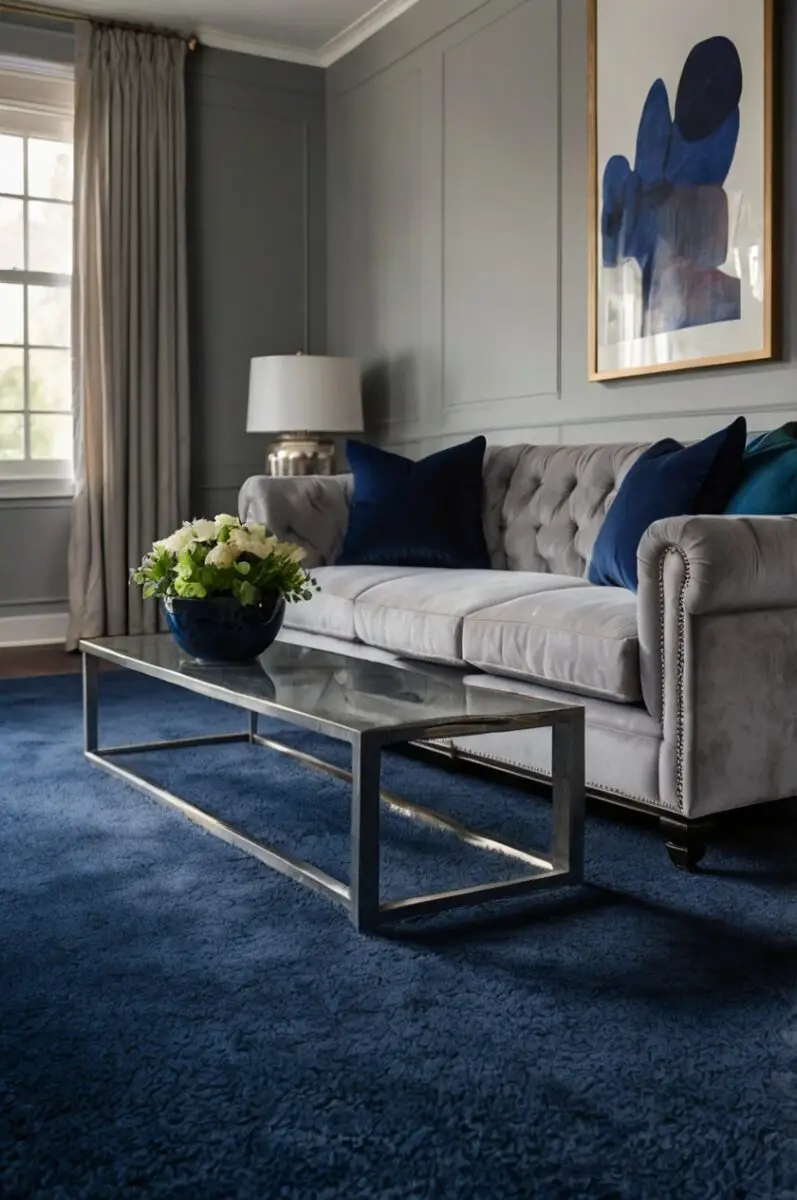
Light gray has become a designer favorite for creating sophisticated spaces that feel open and airy without resorting to plain white.
Gray’s neutral nature allows it to act as a chameleon, taking on subtle undertones that can warm or cool a space while still maintaining its space-enhancing properties.
The reflective quality of light gray paint helps bounce natural light around the room, eliminating dark corners that can make spaces feel cramped.
When choosing gray for small spaces, look for those with an LRV (Light Reflectance Value) of 60 or higher to ensure maximum brightness.
Gray creates a perfect backdrop for artwork and furniture, allowing your eye to appreciate the overall space rather than stopping at dark walls.
For rooms with limited natural light, grays with slightly warmer undertones prevent the space from feeling cold while still opening up the room.
Painting trim in a slightly lighter shade of gray than your walls creates subtle definition without the harsh contrast that can visually chop up small spaces.
Gray has the unique ability to make spaces feel both larger and cozier simultaneously – an ideal combination for small living areas.
The current popularity of gray means it’s available in countless shades, making it easy to find the perfect space-enhancing tone for your specific room.
In open floor plans, light gray creates continuity that makes the entire space feel cohesive and expansive.
Pairing light gray walls with white ceilings and trim maximizes the space-enhancing effect while adding architectural interest.
Gray provides a more forgiving option than white for homes with children or pets, hiding minor smudges while still keeping spaces feeling open.
For maximum versatility, cool light grays work wonderfully in creating modern, spacious rooms, while grays with beige undertones (greige) warm up traditional spaces.
Madison’s Current Obsessions
Paint Your Wood Fence: 12+ Colors That Stand Out4. Pale Green: Bringing Nature’s Openness Inside
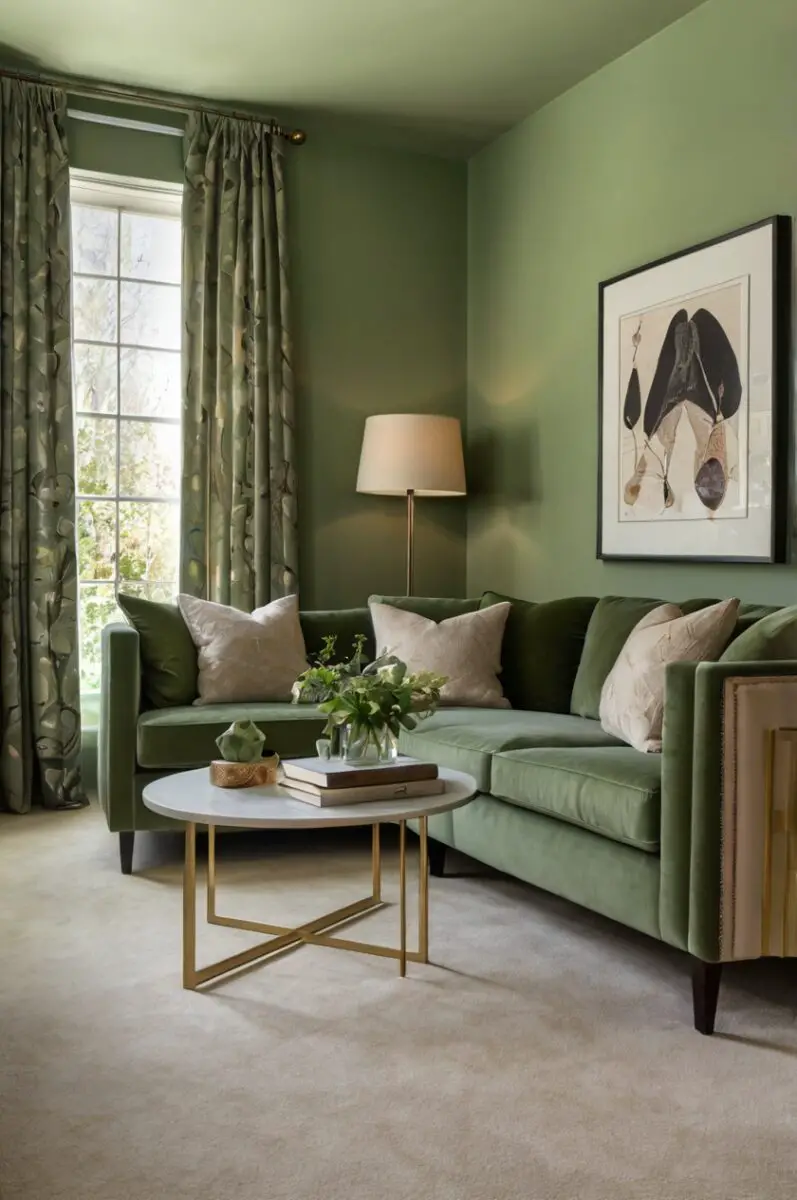
Pale green paint connects your indoor space with the expansiveness of nature, psychologically expanding walls through biophilic design principles.
The refreshing quality of light green instantly makes rooms feel airier and more breathable, especially in spaces with limited square footage.
Green with gray undertones provides sophisticated space-enhancement for living rooms and entryways that need to feel both welcoming and open.
Soft sage green creates a soothing atmosphere in bedrooms while visually pushing walls outward to make the space feel larger.
The versatility of pale green allows it to act as either a neutral background or a subtle accent color while still performing its space-enhancing function.
When selecting green paint for small spaces, mint and seafoam varieties with high light reflectance values create particularly bright, open-feeling rooms.
Green pairs beautifully with natural wood tones, allowing you to incorporate warm elements without sacrificing the spacious feeling.
For rooms with plants, pale green walls create a seamless indoor-outdoor connection that visually expands the boundaries of your space.
Light green paint in kitchens makes them feel fresher and more spacious, particularly important in apartment-sized cooking areas.
The calming effect of pale green comes with psychological benefits beyond just making spaces look bigger – it actually helps rooms feel less crowded and more peaceful.
For maximum space-enhancing effect, pair pale green walls with plenty of natural light and mirrors that multiply the expansive feeling.
Green paint with yellow undertones works wonderfully in north-facing rooms that need both brightening and visual expansion.
The subtle color provided by pale green offers more personality than plain white while still maintaining all the space-enhancing benefits.
Madison’s Current Obsessions
Your White Kitchen's Best Friend: 8+ Wall Color Ideas You'll Love5. Blush Pink: Warm Spaciousness

Blush pink creates an unexpected space enhancer that adds warmth while visually expanding walls through its high light reflectance.
The subtle warmth of pale pink counteracts the coldness often found in small spaces while still reflecting plenty of light to make rooms feel bigger.
This soft hue acts as a “new neutral” – adding just enough color interest without visually closing in walls the way stronger colors might.
Blush pink’s association with sunrise skies subconsciously creates feelings of openness and possibility in even the smallest rooms.
In bedrooms, blush creates a flattering glow that makes the space feel both larger and more intimate – a perfect combination.
Unlike stark whites that can sometimes feel clinical in small spaces, blush pink adds warmth while maintaining all the space-enhancing properties.
The subtle femininity of blush works particularly well in smaller dressing areas and bathrooms, making them feel more luxurious and spacious.
Pairing blush walls with white trim creates definition without harshness, allowing your eye to appreciate the full dimensions of the room.
For maximum space enhancement, choose blush tones with just a hint of color – anything too saturated will start to close in walls rather than expand them.
Blush pink has the unique ability to make spaces feel simultaneously cozy and expansive – ideal for small living rooms and bedrooms.
When painting with blush, consider carrying the color onto the ceiling for a cohesive look that eliminates harsh transitions that can make spaces feel smaller.
The psychological effect of blush creates feelings of optimism and openness, contributing to the perceived spaciousness of rooms painted in this color.
For a contemporary twist on space-enhancing pink, consider blush tones with slight peach or coral undertones that add warmth without closing in the space.
Madison’s Current Obsessions
18 Unique Red Wall Decor Ideas To Transform Your Space6. Pale Yellow: Sunshine Spaciousness
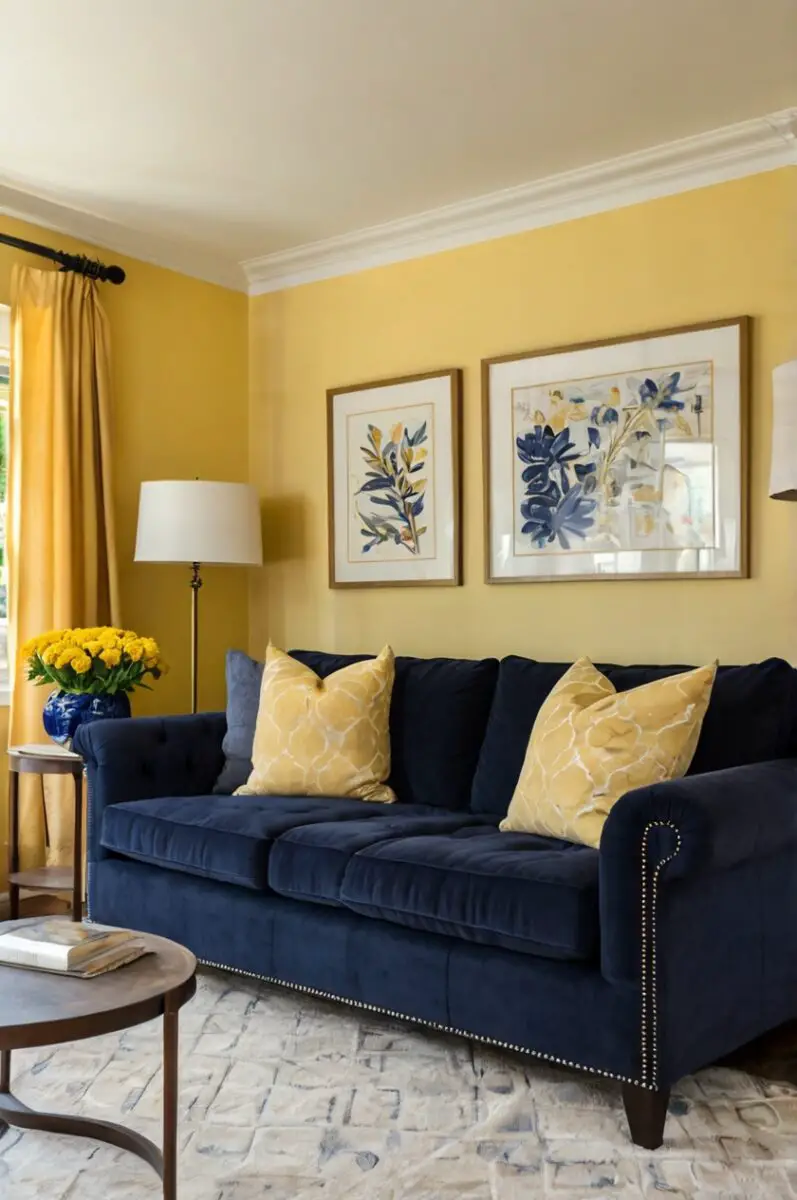
Pale yellow paint mimics natural sunlight, instantly making rooms feel sunnier, larger, and more welcoming through its light-enhancing properties.
The psychological effect of yellow creates feelings of optimism and expansiveness that make spaces feel less confining.
Unlike cooler space-enhancing colors, pale yellow adds warmth to rooms that might otherwise feel cold and cramped.
In kitchens and dining areas, butter yellow creates an inviting atmosphere while visually pushing walls outward.
For north-facing rooms with limited natural light, pale yellow performs double-duty by both brightening and visually expanding the space.
The reflective quality of light yellow helps bounce existing light around the room, eliminating shadows that can make spaces feel smaller.
When selecting yellow for space-enhancement, stick to pale, creamy tones rather than bright or saturated varieties that can overwhelm small spaces.
Yellow with slight beige undertones (sometimes called “mannequin”) creates sophisticated space enhancement that works in both traditional and contemporary rooms.
Pale yellow ceilings reflect light downward into the room, making the entire space feel brighter and taller.
For maximum space-expanding effect, pair pale yellow walls with white trim and plenty of mirrors to multiply the light-reflecting benefits.
Yellow paint with high LRV (Light Reflectance Value) rankings will perform best for making small spaces feel larger and more open.
In home offices and craft rooms, pale yellow creates an energizing atmosphere while keeping the space feeling open and unconfined.
The versatility of pale yellow allows it to work with many decorating styles while consistently performing its space-enhancing magic.
Madison’s Current Obsessions
What Color Walls go With Light Brown Furniture Top 20 Picks7. Lavender Gray: Unique Space Creator

Lavender-gray paint offers a unique twist on traditional space-enhancing colors, adding subtle interest while still visually expanding walls.
The cool undertones in lavender-gray help walls recede visually, creating the perception of more space in tight rooms.
For those bored with standard whites and beiges, lavender-gray provides personality while maintaining all the space-expanding benefits.
The calming quality of lavender makes spaces feel less cluttered and more serene, contributing to the overall feeling of openness.
In bedrooms, lavender-gray creates a restful atmosphere while making the space feel larger and more luxurious.
This complex neutral changes throughout the day with shifting light, creating visual interest without closing in the space.
When selecting lavender-gray paint, look for sophisticated options with gray undertones rather than purple-heavy varieties that might feel too intense for small spaces.
Pairing lavender-gray walls with white trim creates definition that enhances the perceived dimensions of your room.
For rooms that need to feel both elegant and spacious, few colors perform as well as the subtle complexity of lavender-gray.
This versatile color works beautifully in both traditional and contemporary settings while consistently creating that desired feeling of expansiveness.
In powder rooms and small bathrooms, lavender-gray adds interest while keeping the space feeling open and unconfined.
The unique undertones of lavender-gray allow it to coordinate with both warm and cool accent colors, making it highly versatile for space enhancement.
For maximum effect, consider lavender-gray paint with slight reflective qualities that help bounce light around small rooms.
Madison’s Current Obsessions
What Color Walls Go With Dark Brown Furniture : Top 20+ Picks8. Pale Taupe: Neutral Space Enhancer
Pale taupe creates sophisticated spaciousness through its perfect balance of warm and cool undertones that help walls recede visually.
The neutral quality of taupe makes it an excellent space-enhancer for rooms that need to feel larger without committing to stark white or distinct colors.
Taupe’s chameleon-like properties allow it to adapt to different lighting conditions while consistently making spaces feel open and airy.
In living rooms and family spaces, taupe creates a welcoming atmosphere while visually expanding the boundaries of the room.
The subtle warmth in pale taupe prevents small spaces from feeling cold or sterile while maintaining all the space-enhancing properties.
When choosing taupe for small spaces, opt for lighter versions with high LRV (Light Reflectance Value) ratings for maximum brightness and visual expansion.
The versatility of taupe allows it to coordinate with virtually any accent color while still performing its space-enhancing function.
For open floor plans, taupe creates cohesion between different areas while making the entire space feel more expansive.
Pairing taupe walls with slightly darker taupe trim creates sophisticated definition without harsh contrasts that can visually chop up small spaces.
The timeless quality of taupe means your space-enhancing paint choice won’t quickly look dated – important for rooms you don’t plan to repaint frequently.
In small bedrooms, taupe creates a cocoon-like feeling while still making the space feel larger than its actual dimensions.
The flexibility of taupe allows it to work in both modern and traditional settings while consistently creating that desired feeling of spaciousness.
For maximum effect, combine pale taupe walls with furniture in similar tones to create a monochromatic look that visually expands the entire space.
Madison’s Current Obsessions
Why Beige Floors Deserve The Best Wall Colors To Shine!9. Sky Blue: Bringing the Outdoors In
Sky blue paint psychologically removes the boundaries between indoor and outdoor space, instantly making rooms feel as expansive as the open sky.
The visual effect of sky blue helps ceilings appear higher and walls farther away, significantly enhancing the perceived size of any room.
Unlike darker blues that can sometimes feel heavy, sky blue has enough lightness to reflect plenty of light while still providing visual interest.
In bathrooms and bedrooms, sky blue creates a spa-like atmosphere while making these typically smaller spaces feel much more open.
The natural association between sky blue and open spaces works subconsciously to make rooms feel less confined and more expansive.
When selecting sky blue paint, look for options with subtle gray undertones for a sophisticated space-enhancer that won’t feel too childlike or themed.
For rooms with limited natural light, sky blue with slightly warmer undertones prevents the space from feeling cold while still opening it up visually.
Pairing sky blue walls with white trim creates a fresh, clean look that enhances the overall spaciousness of the room.
For maximum effect in really small spaces, consider carrying sky blue onto the ceiling to eliminate the harsh transition line that can make rooms feel smaller.
The versatility of sky blue allows it to work well in almost any room while consistently creating that desired feeling of openness.
In home offices, sky blue creates an uplifting atmosphere while keeping the space feeling open and conducive to creativity.
For a sophisticated twist, consider sky blues with slight aqua undertones that retain all the space-enhancing properties while adding contemporary flair.
When using sky blue for space enhancement, semi-gloss or satin finishes further boost the light-reflecting properties for maximum effect.
Madison’s Current Obsessions
Why Peel and Stick Wallpaper is the Game-Changer Your Walls Need!10. Pale Greige: The Perfect Compromise
Greige (gray-beige) paint offers the perfect compromise between warm and cool space-enhancing neutrals, working in virtually any lighting condition.
The chameleon-like quality of pale greige allows it to adapt to its surroundings while consistently making walls recede and spaces feel larger.
Unlike pure gray which can sometimes feel cold in small spaces, greige adds just enough warmth to feel inviting while maintaining space-expanding properties.
The sophisticated nature of greige makes it ideal for living rooms and entryways that need to feel both elegant and spacious.
When selecting greige for space enhancement, choose lighter versions with LRV (Light Reflectance Value) above 65 for maximum brightness.
The versatility of greige allows it to complement both warm and cool accent colors while still performing its space-enhancing function.
For open floor plans, greige creates beautiful continuity that makes the entire home feel more cohesive and spacious.
Pairing greige walls with white trim creates subtle definition that enhances the perceived dimensions of your space.
In small bedrooms and studies, greige provides a restful backdrop that makes the room feel larger without being boring or sterile.
The timeless quality of greige ensures your space-enhancing color choice won’t quickly look dated – perfect for rooms you don’t plan to repaint often.
For maximum effect, combine pale greige walls with natural light and strategically placed mirrors to multiply the space-expanding benefits.
The neutral nature of greige allows your eye to appreciate the full dimensions of the room without getting visually stopped by bold color changes.
In rooms with architectural interest, greige highlights these features while still maintaining that important feeling of spaciousness and openness.
Madison’s Current Obsessions
Tonal Treasures: 13 Carpet Shades That Sync With Forest Green Walls11. Pale Aqua: Refreshing Room Expander
Pale aqua paint brings the expansiveness of water into your home, psychologically expanding walls through its association with limitless oceans.
The refreshing quality of light aqua instantly makes rooms feel more breathable and open, especially important in small bedrooms and bathrooms.
Unlike plain blues, aqua’s green undertones add a contemporary twist to space enhancement that feels fresh and current.
The light-reflective properties of pale aqua help eliminate shadows and dark corners that can make spaces feel smaller and more confined.
In coastal-style homes, pale aqua creates authentic atmosphere while performing the important function of making spaces appear larger.
When selecting aqua for small spaces, look for soft, grayed versions rather than bright turquoise tones that might visually close in walls.
For rooms with limited natural light, aqua with slightly warmer undertones prevents the space from feeling cold while still opening it up.
Pairing pale aqua walls with white trim creates a clean, defined look that enhances the overall spaciousness of the room.
The versatility of pale aqua allows it to act as either a neutral background or a subtle accent color while still expanding your space visually.
In small kitchens and dining areas, aqua creates a fresh, clean feeling while making the space feel larger than its actual dimensions.
For maximum effect, consider carrying pale aqua onto the ceiling in bathrooms to create a seamless, expansive feeling without harsh transition lines.
The psychological effect of aqua creates feelings of tranquility and openness, contributing significantly to how spacious a room feels beyond just its visual properties.
When using aqua for space enhancement, eggshell or satin finishes further boost the light-reflecting properties for maximum expansion effect.
Madison’s Current Obsessions
15 Wood Beam Ceiling Ideas to Add Character to Your Home!12. Soft Cream: Warm Spaciousness
Soft cream paint offers the space-enhancing properties of white with added warmth that makes small rooms feel both larger and more inviting.
The subtle yellow undertones in cream prevent it from feeling stark or cold while maintaining excellent light-reflecting properties.
In traditional homes, cream creates timeless elegance while making spaces feel more expansive than their actual dimensions.
The versatility of cream allows it to complement both modern and antique furniture while consistently performing its space-enhancing function.
When selecting cream for small spaces, look for options with LRV (Light Reflectance Value) above 70 for maximum brightness and visual expansion.
Unlike pure white which can sometimes feel clinical, cream adds subtle warmth while keeping all the important space-expanding benefits.
In rooms with limited natural light, cream performs better than white by adding warmth without closing in the space.
Pairing cream walls with slightly darker cream trim creates sophisticated definition without harsh transitions that can visually chop up small spaces.
For dining rooms and entertaining spaces, cream creates an elegant atmosphere while keeping the space feeling open and unconfined.
The timeless quality of cream ensures your space-enhancing color choice won’t quickly look dated – important for spaces you don’t plan to repaint frequently.
In bedrooms, cream creates a serene backdrop that makes the space feel larger while promoting restful sleep.
The neutral nature of cream allows your eye to travel freely around the room, appreciating its full dimensions without getting stopped by bold color changes.
For maximum effect, combine cream walls with natural light and mirrors to multiply the space-enhancing benefits throughout the room.
Madison’s Current Obsessions
What Unique Touch Can You Add To Your Space With Wood Slats? Let’s Discover Together!13. Pale Silver: Reflective Space Creator
Pale silver paint with subtle metallic properties creates maximum light reflection that significantly enhances the perceived size of any room.
The reflective quality of silver-toned paint helps blur the boundaries of walls, making them appear to recede rather than close in on you.
Unlike flat light grays, silver paint with minimal sheen adds dimension to walls that creates visual interest without sacrificing spaciousness.
In contemporary spaces, silver creates a sophisticated atmosphere while making the room feel significantly larger than its actual dimensions.
When selecting silver paint, look for options with warm undertones to prevent the space from feeling cold while still maintaining expansive properties.
The versatility of pale silver allows it to complement both warm and cool accent colors while consistently performing its space-enhancing function.
For maximum effect, silver paint works particularly well in rooms with multiple light sources, as it multiplies the illumination throughout the space.
Pairing silver walls with white trim creates clean definition that enhances the perceived dimensions of your room.
In small bedrooms and bathrooms, silver with subtle iridescence creates luxurious atmosphere while visually pushing walls outward.
The contemporary feel of silver ensures your space-enhancing color choice feels current without being trendy – important for lasting satisfaction.
For even greater space enhancement, consider silver paint with actual metallic particles that maximize light reflection throughout the room.
The neutral nature of silver allows your eye to appreciate the full dimensions of the space without getting visually stopped by bold color transitions.
When using silver for maximum space enhancement, pair it with clear glass, lucite, or mirror accents that further contribute to the open, airy feeling.

